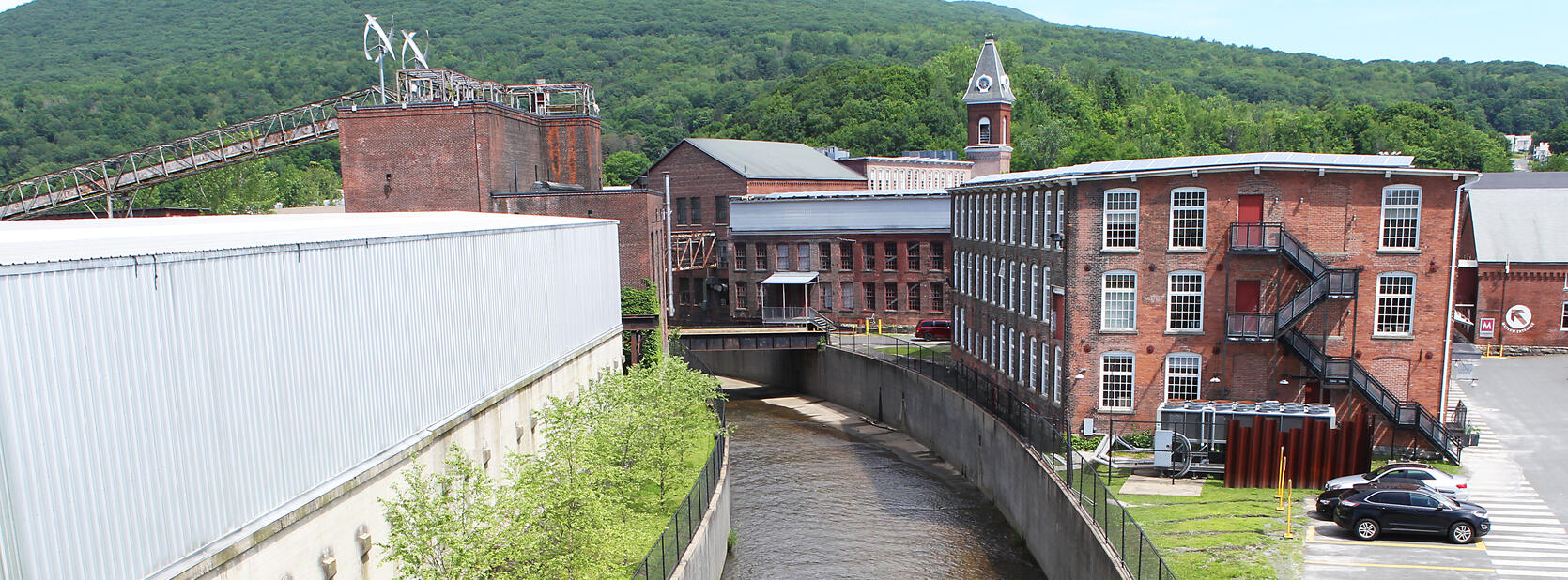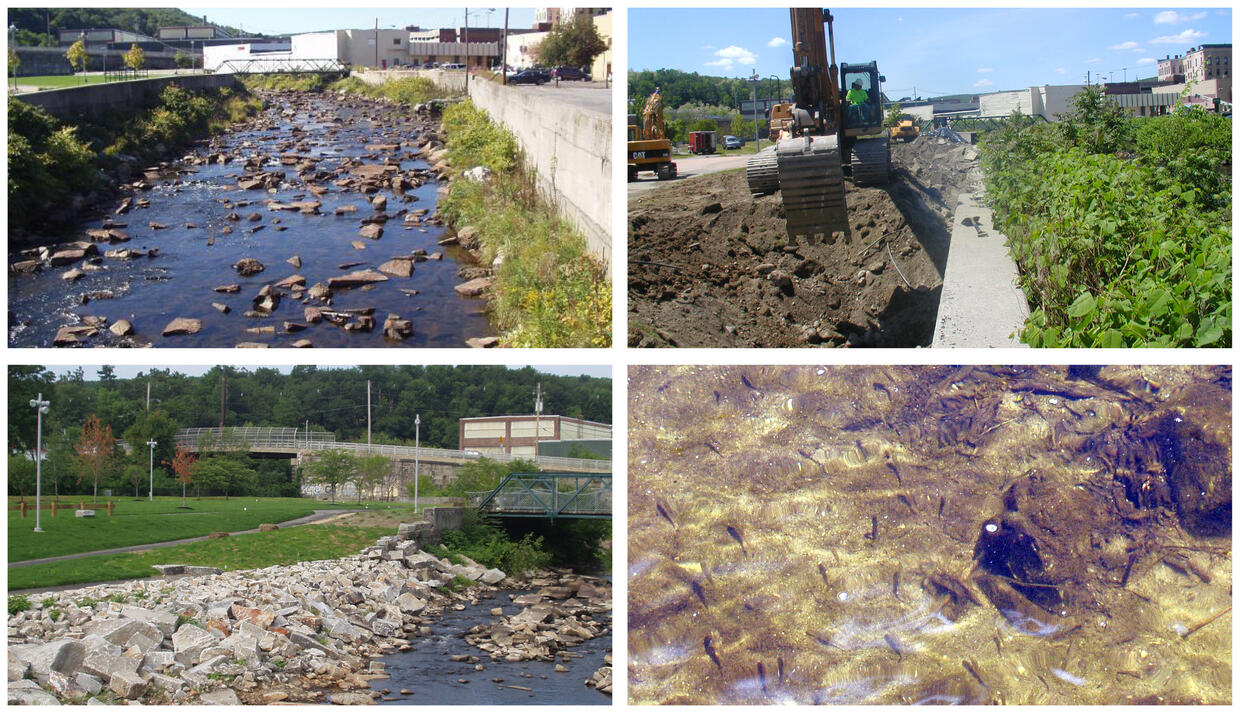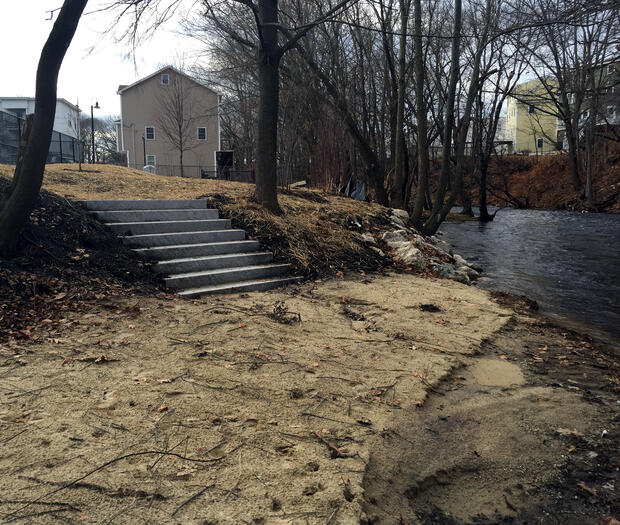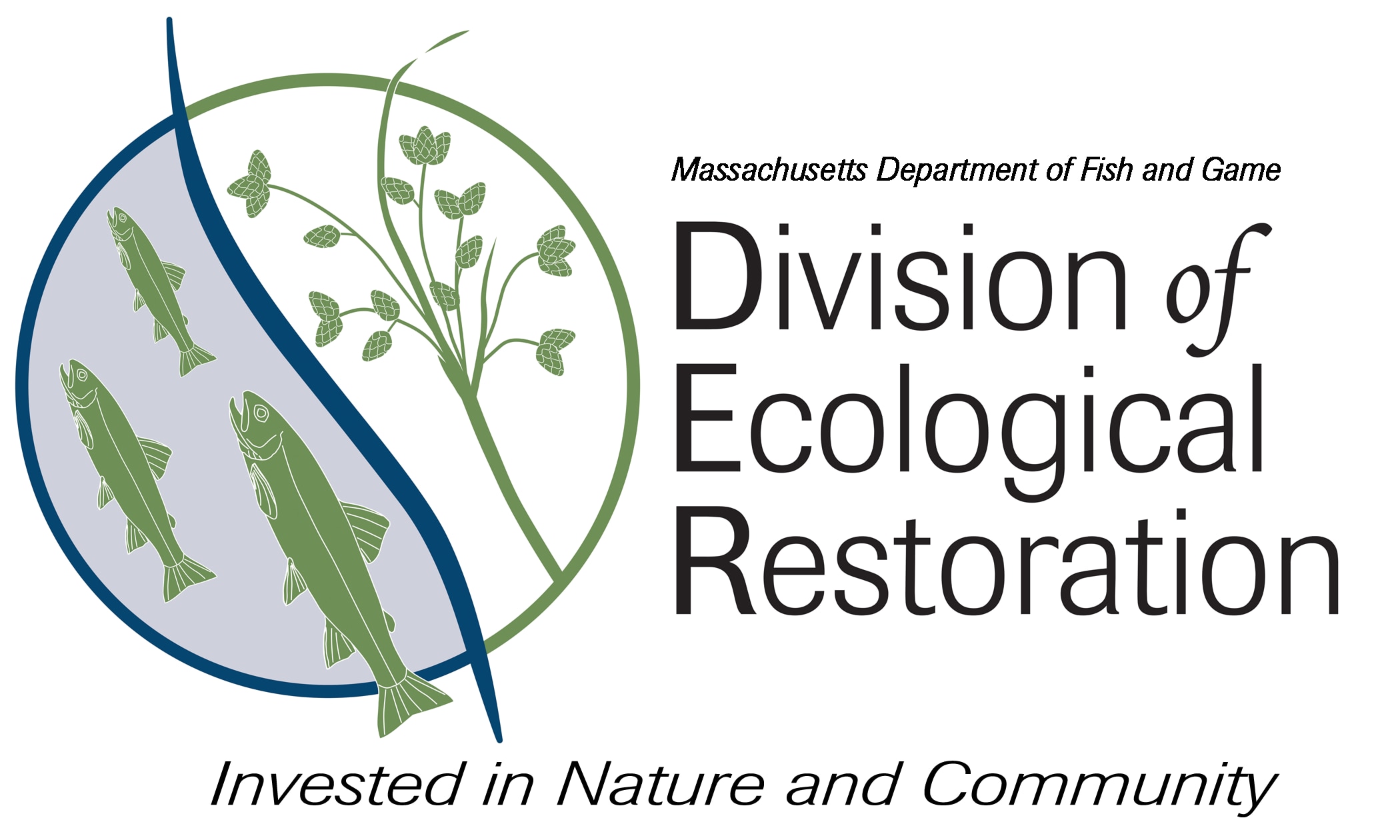- Division of Ecological Restoration

Imposing granite blocks crowned by a dreary concrete wall. This was the backdrop of DER’s first urban river restoration and an apt illustration of the imagination and vision inherent in urban river advocates. The river was the North Nashua. The location: an isolated pocket park in the middle of Fitchburg’s downtown. Prior to the formation of DER, the Riverways Program had begun several forays into urban river work expanding to include restoration under DER.
The City and the watershed had a storied history of river advocacy. Locals including Marion Stoddart were instrumental in passing the 1974 federal Clean Water Act - initiating the modern era of water quality protection. They championed – and achieved- water quality improvements for the Nashua River and worked to raise the stature of the river in the community. Not an easy task given the North Nashua’s stubborn label of ‘dead river’ acquired when an image of the river, an alarming brick red, graced the cover of National Geographic in the 1960’s. The advocates’ work was further complicated by miles of those granite blocks and concrete walls hemming in their river and isolating the waterway from the city and its residents.
It is hard to celebrate a river when it takes rappelling gear to access the river’s edge. The wish to reintroduce the North Nashua River to the community launched a years-long effort to identify access options and opportunities. The City of Fitchburg and a diverse coalition of river advocates worked with DER to host a community visioning session. The ideas generated by the attendees served as the catalyst for a river master plan.
The City’s new Riverfront Park was the ideal pilot restoration project. Both access to and views of the North Nashua River were blocked by the flood walls built decades earlier by the Army Corps of Engineers. Creating river access was the goal but equally important was maintaining or increasing the level of flood protection afforded by the flood walls. Fortunately the site offered its own elegant solution. Riverfront Park was a small sliver of green squeezed between the flood wall and an active rail line. Building up an earthen berm just a bit higher than the flood wall, adjacent to the railroad tracks, easily replicated the flood containment offered by the walls while providing the bonus of buffering the park from the passing trains.
A number of unanticipated hurdles kept the project ‘lively’ but six years after the community gathered to dream of an accessible river, a section of flood walls came down. A grassed slope and a trail inviting people to the river’s edge replaced the concrete wall blocking river views and access. The North Nashua River rightfully became a focal point of Riverfront Park and a green gap in the restrictive granite and concrete walls lining the river.
The work on the North Nashua and the burgeoning focus on urban rivers across the country provided momentum to continue urban river restoration projects in the Commonwealth. Urban river restoration offers unique benefits including improving access to and recreation on and along a waterway in densely developed areas, addressing a range of water quality issues, and improving and reintroducing overlooked natural resources amenities to environmental justice communities. A good illustration of this was DER next urban river undertaking- the Spicket River, another tributary of the Merrimack River.
The river had long ago been straightened and channelized as it flowed through Lawrence - unintentionally creating a flood prone waterway that inundated the adjacent neighborhoods during heavy rains. An assessment identified an impressive list of assets in and along this urban waterway, some challenges and several feasible restoration opportunities. DER worked with the city and local community advocates to implement restoration projects to address bank erosion, create in-channel habitat, reduce instability and provide dedicated access to the river’s edge. These river restorations complemented several other river-focused initiatives to improve the river and adjacent neighborhoods including a riverside trail. The Spicket River was and continues to be a multi-faceted revitalization hub within the city.
Each urban river project provides a wealth of learning opportunities and inspirations. The North Nashua Project and other urban river projects across the country spurred local community activists in North Adams to explore restoring their concrete-constrained river. DER has a new undertaking offering dual benefits that tap a range of our restoration interests. The City of Chicopee applied for priority project status to remove a failing dam, explore a second dam removal and consider measures to improve water quality and habitat in and along Abbey Brook. The City welcomed the suggestion by DER to determine the feasibility of daylighting a portion of Abbey Brook just downstream of the dam removal to extend the community amenities possible with this unique urban waterway- a strategy many cities have shown to be economic and social success.
Urban river projects offer special rewards including being a party to the inspiration and dedication of the local communities. Restoration projects across the planet are proving the resiliency and worth of focusing on these often discounted waterways.


